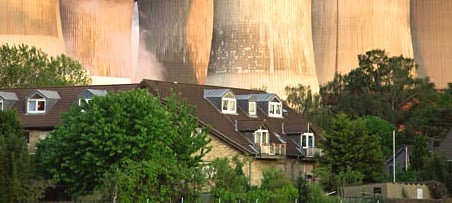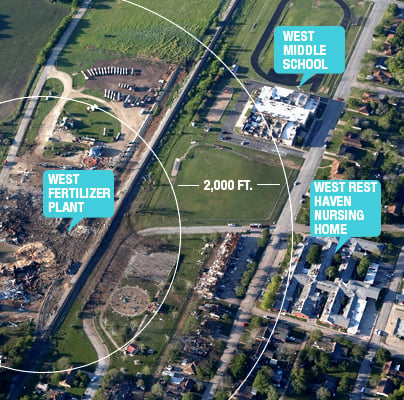 When we think of a manufacturing plant we usually think of them far away, out in the countryside or the outskirts of town, maybe on the far edge of a city. Typically this is where they’re built too, where the noise and commotion from the work going on inside won’t bother anyone living nearby. However, as urban sprawl occurs outwards from the heavily populated cities one effect is that people start to move closer to these industrial sites, some households having the plant right in their backyard. This causes numerous issues, including pollution and health problems for people living close to these plants and their fumes, but it also highlights the importance of the manufacturing plant enforcing rules to keep it safe from the risk of combustible dust explosions.
When we think of a manufacturing plant we usually think of them far away, out in the countryside or the outskirts of town, maybe on the far edge of a city. Typically this is where they’re built too, where the noise and commotion from the work going on inside won’t bother anyone living nearby. However, as urban sprawl occurs outwards from the heavily populated cities one effect is that people start to move closer to these industrial sites, some households having the plant right in their backyard. This causes numerous issues, including pollution and health problems for people living close to these plants and their fumes, but it also highlights the importance of the manufacturing plant enforcing rules to keep it safe from the risk of combustible dust explosions.
One of the most famous combustible dust explosions, the West Pharmaceuticals Services explosion in 2003, was such a powerful explosion that it broke windows in houses over 1000 feet away, and threw debris over 2 miles, which caused fires and damaged areas where it landed. It killed 6 people and injured over 30.
Luckily, at the time of the explosion the area surrounding the plant was not heavily populated, but just imagine the damage and injuries that would have been caused if more people lived closer to the plant.
Another famous explosion, the West Texas Fertilizer explosion, occurred in 2013 when ammonia nitrate being stored for use in fertilizers exploded, killing 15 people and injuring over 160. Within less than 2000 feet of the plant were a nursing home, a middle school, a hospital, and numerous houses. A high school was just outside the 2000 foot range as well, and the highway was just 3000 feet away.

The middle school building was severely damaged, the nursing home was damaged and many residents were injured when trying to evacuate, and an apartment building close by was completely destroyed by the blast. This explosion occurred at 7:50 pm, when the school was luckily empty of students, but what would have happened to them if the blast had occurred earlier in the day?
These examples show why it is so incredibly important to follow the rules and regulations designed to keep everyone safe around a manufacturing plant, especially when there is a risk of combustible dust explosions.
If you are concerned about potential safety violations or the risk of a combustible dust explosion in your facility, contact a Hughes Environmental representative today to learn more about how we can help you keep everyone safe.

